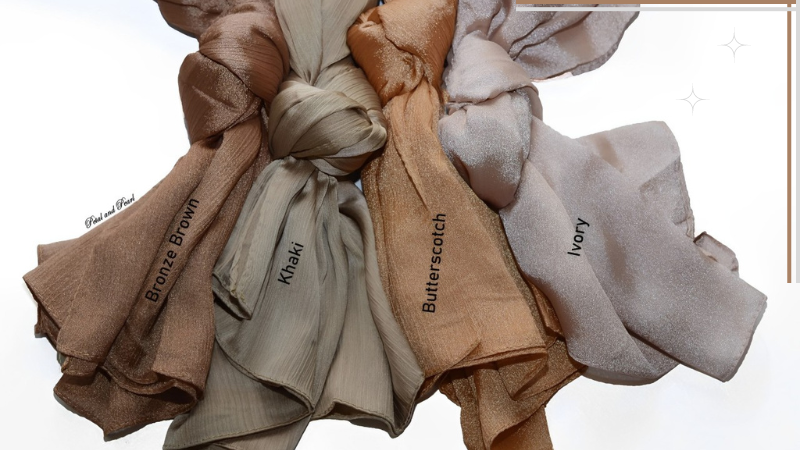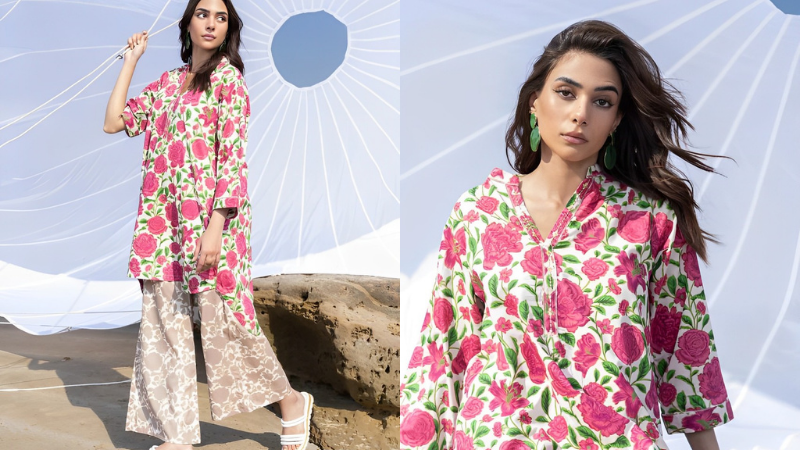What Is Silk?
Silk is a material created by insects to build their nests and cocoons. Various insects produce silk, such as silkworms (the most common), beetles, honey bees, bumble bees, hornets, weaver ants, and many others. Silk is primarily composed of a protein called fibroin and, as a material, is admired for its softness and shine.
How Is Silk Made?
Silk is a luxurious fabric that symbolizes wealth and status for thousands of years. Creating silk starts with the silkworms, fed mulberry leaves, and then spun cocoons around themselves using a single continuous silk thread. The cocoons are boiled in hot water to loosen the silk fibers and then spun into threads. These threads are woven into Fabric by interlacing them vertically and horizontally. The final step is finishing, which includes bleaching, printing, and ironing. Although labor-intensive, the result is a sought-after fabric used in clothing, bedding, and home decor.
This blog post provides complete information about the different types of silks currently available on the Pandi Wholesale website. Whether you're looking for silk fabric for a particular project or want to learn more about the various options, this article has you covered.
Grip
This unique Fabric is made by winding silk fibers with a special technique that creates a slightly rougher texture, providing a better grip than traditional silk. Athletic wear is commonly made using grip silk fabric, known for its ability to deliver a comfortable and secure fit.

This Fabric's grip factor is famous for dance and performance costumes, allowing dancers to move freely without clothing slipping. In addition to its practical uses, grip silk fabric adds grace to any outfit. Its fine texture and sheen give it a high-end look that is perfect for formal occasions and evening wear. The durability of grip silk fabric is another reason for its popularity.
Crinkle/Chiffon Silk Fabric
Crinkle and chiffon silk fabrics are two versatile materials in the fashion world. Both are made from silk, a natural fiber known for its softness, shine, and durability. Crinkle silk, also known as crushed silk, is created by crushing and twisting the Fabric, giving it a unique texture. On the other hand, chiffon silk is a lightweight, sheer fabric made from finely woven threads, giving it a delicate and satisfactory quality.

One of the most distinctive features of crinkle and chiffon silk fabrics is their ability to drape and flow beautifully, making them ideal for creating elegant and flowy garments. Outfits can gain dimension by incorporating crinkled Fabric, commonly selected for dresses, blouses, and skirts. On the other hand, chiffon silk is often used to create soft, feminine pieces such as evening gowns, scarves, and undergarments.
Silk fabrics are versatile and can be dyed and printed with different colors, patterns, and textures.
Viscose Silk
Viscose silk, also known as rayon, is a semi-synthetic fabric that has gained popularity recently due to its soft and lavish feel. Lightweight and breathable, it's a popular choice for clothing and home décor.

Viscose silk is made from cellulose, a natural polymer found in plants, which is then processed and turned into a silky fiber. Cellulose is treated with chemicals to form a liquid and extruded through tiny holes to create fibers. Viscose silk is a versatile, soft fabric spun from fibers and woven into yarn. It has a smooth texture similar to natural silk but is more affordable. Because of its versatility, it is effortless to mix with other fibers such as cotton, wool, or polyester to produce a range of textures and finishes. It is also highly absorbent and ideal for hot and humid climates. However, care must be taken when washing viscose silk as it is prone to shrinking and losing shape if not handled properly. Viscose silk is a sustainable option made from renewable resources without harmful chemicals. Its popularity is expected to grow as consumers seek eco-friendly alternatives. In conclusion, viscose silk is a versatile, luxurious, and sustainable fabric that offers a more affordable option than natural silk without compromising quality.
Raw Silk
It is a type of silk made from the cocoons of silkworms, but unlike regular silk, it is not processed or treated in any way. This results in a fabric that has a unique texture and sheen, making it highly sought after in the fashion industry. The production of raw silk involves a labor-intensive process, starting with harvesting cocoons from silkworms. These cocoons are then boiled to soften the silk fibers, and the threads are carefully unwound from the cocoons. This delicate process requires skilled workers who have been trained in the art of silk production. Once the silk threads are unwound, they are sorted and cleaned to remove impurities. The threads are then turned into yarn, which is used to create the raw silk fabric. One of the most distinctive characteristics of raw silk is its irregular texture, which results from the natural fibers being left in their unprocessed state.

This gives the Fabric a unique and organic look, making each piece of raw silk unique. Another notable quality of raw silk is its ability to hold color very well, resulting in deep and richly pigmented fabrics. Raw silk is a popular choice for grand and statement-making garments and accessories.
Final Words
Pandi offers a diverse range of white Silk fabrics in its unstitched collection. You can use our white fabric for different printings. Some fabrics suit every style, whether you're dressing up for casual outings, work, or get-together parties. Silk fabrics are a versatile choice for any occasion. They can be used to create various garments, varying in cut, style, occasion, and color. Furthermore, silk fabric can be utilized for bedding and home decoration projects. This article presents five silk fabrics to keep you comfortable and stylish every season.













